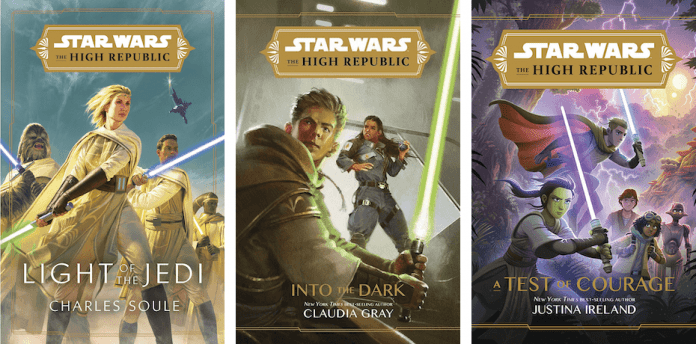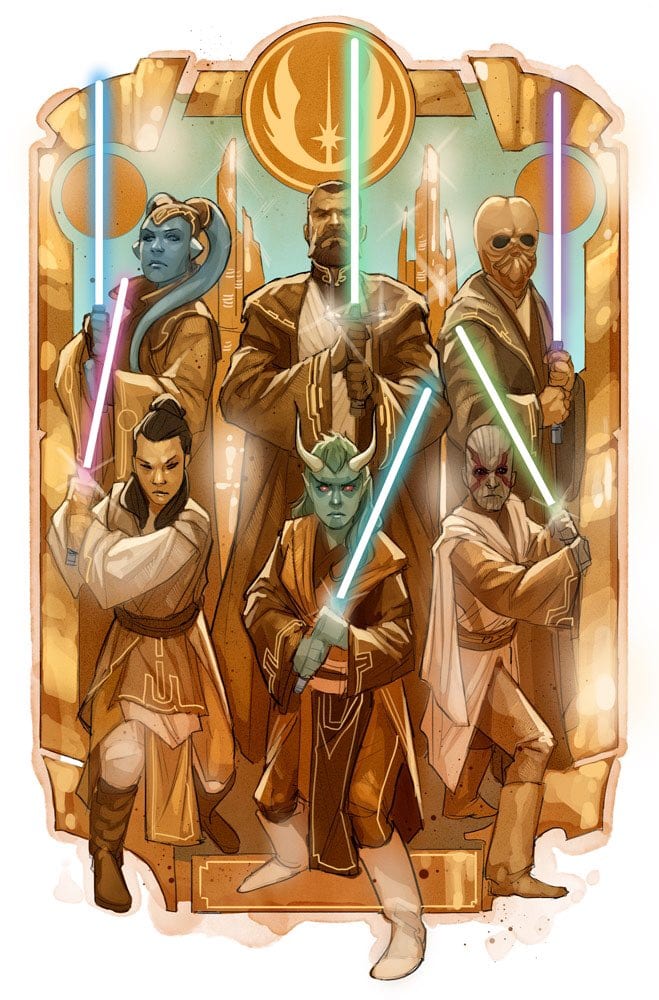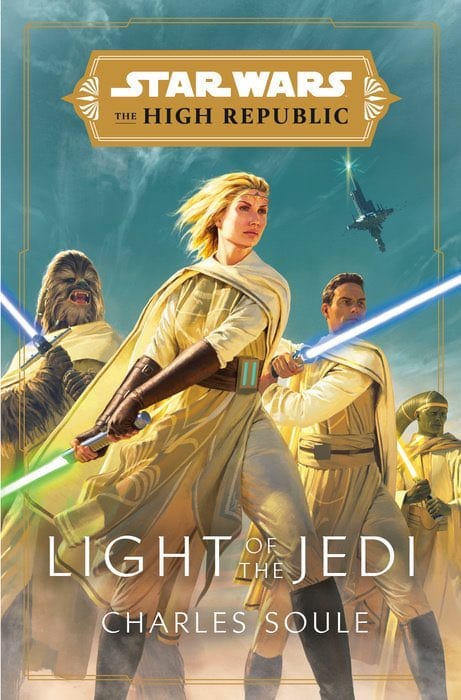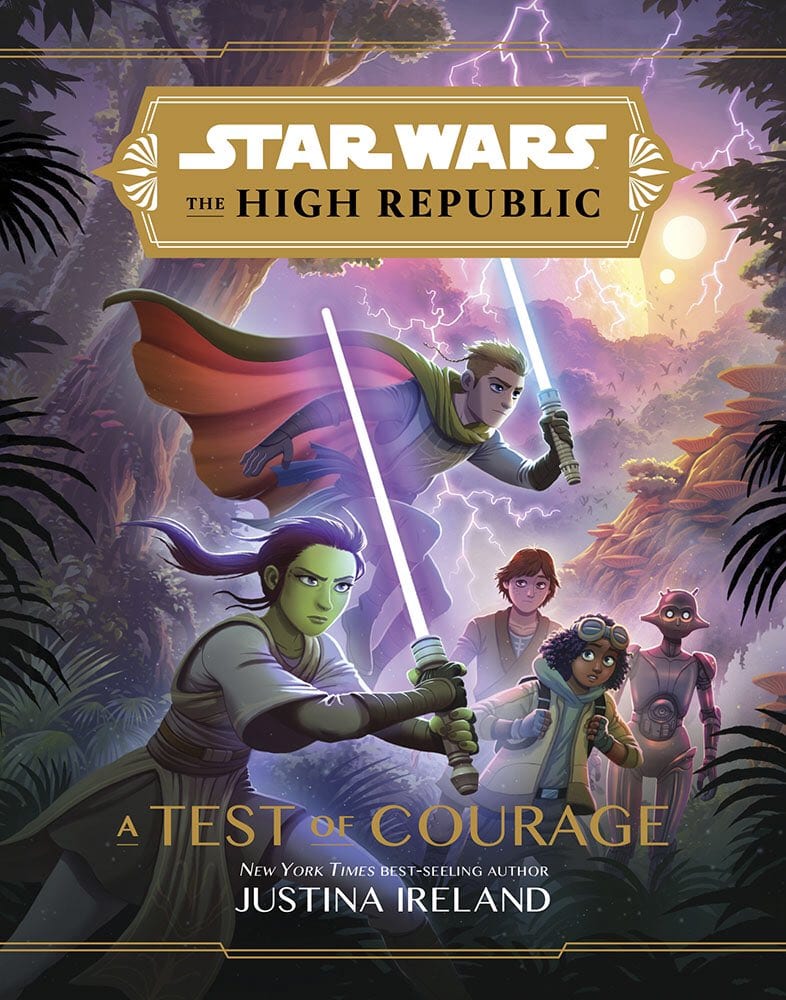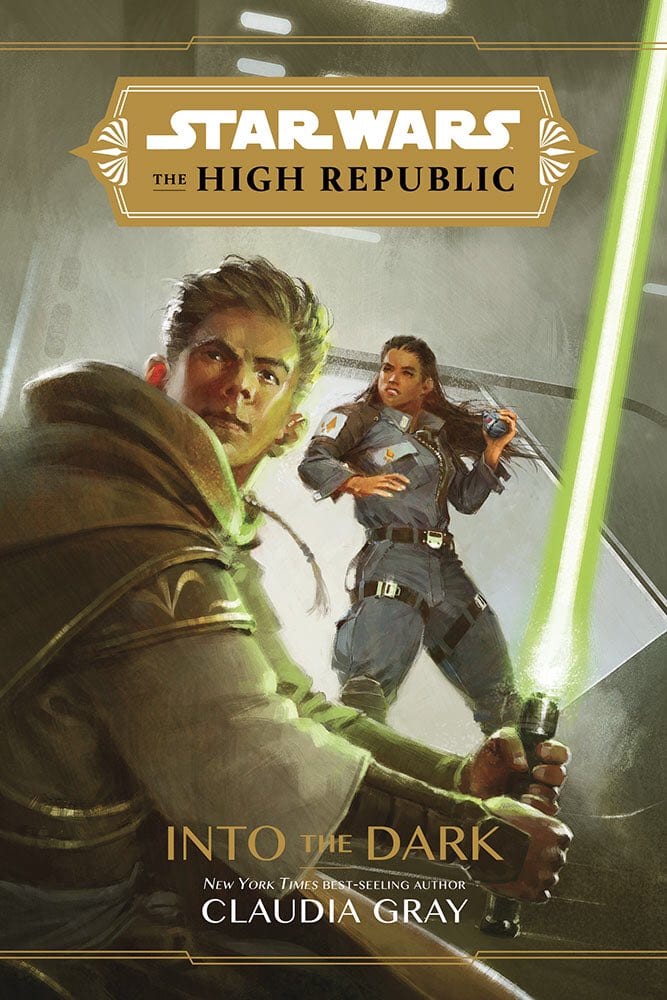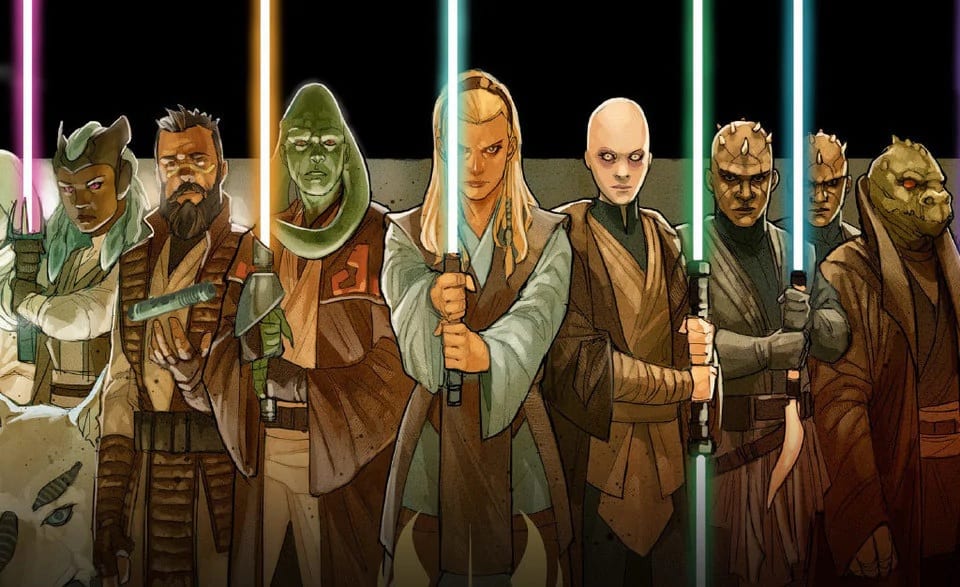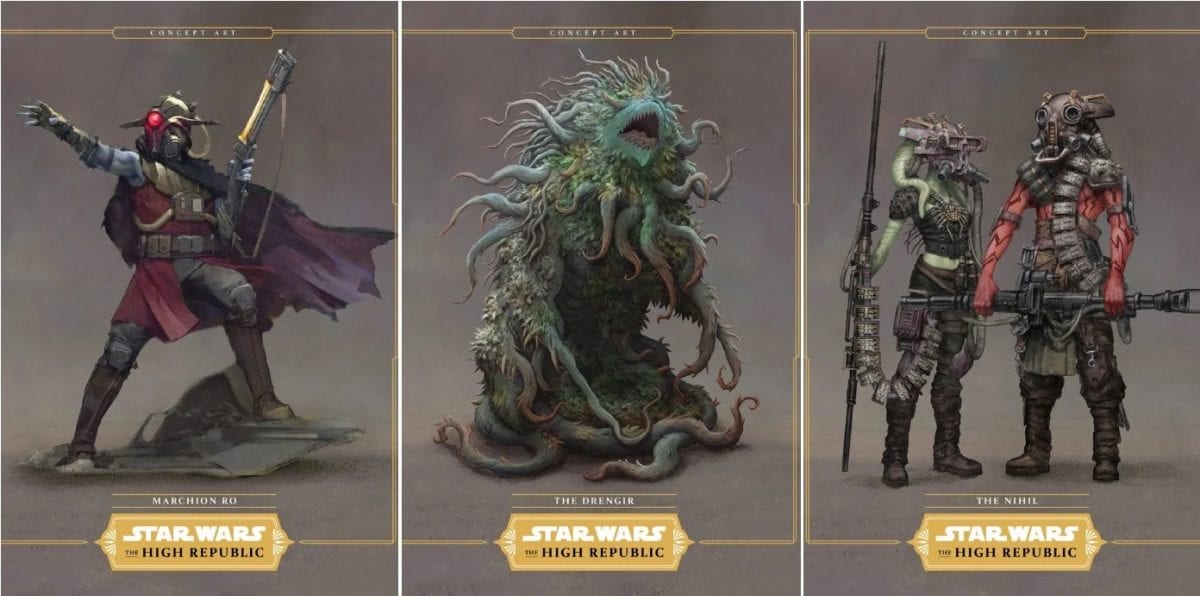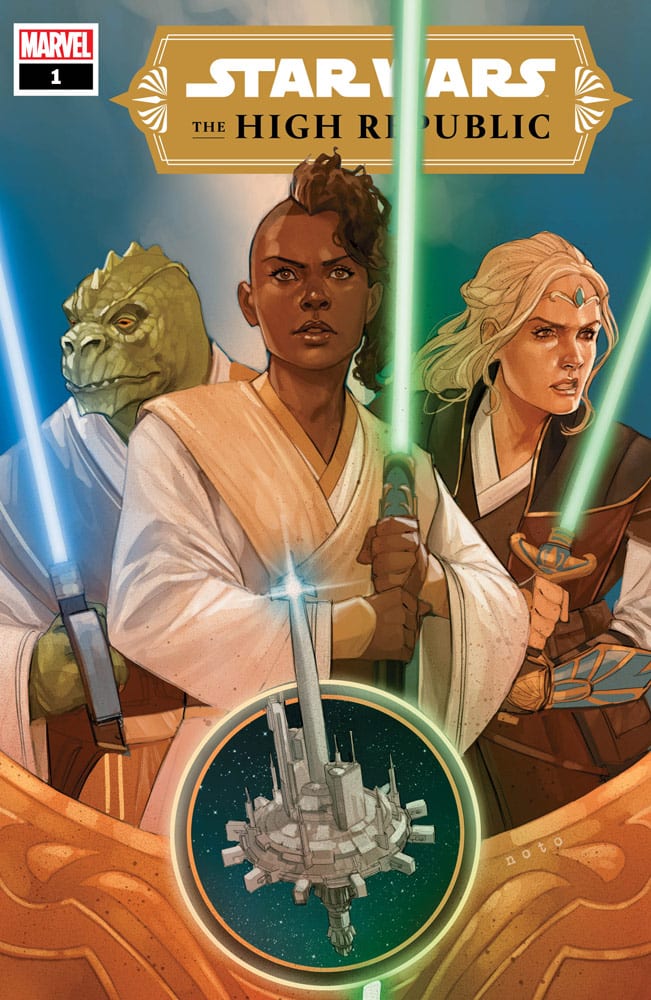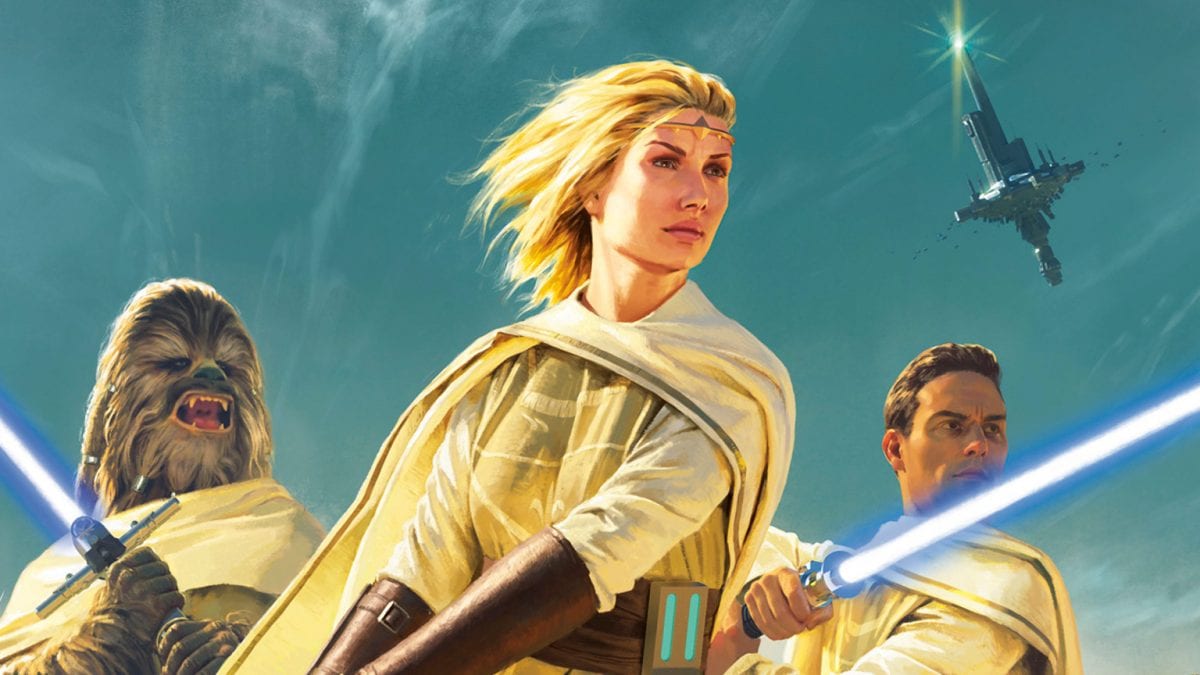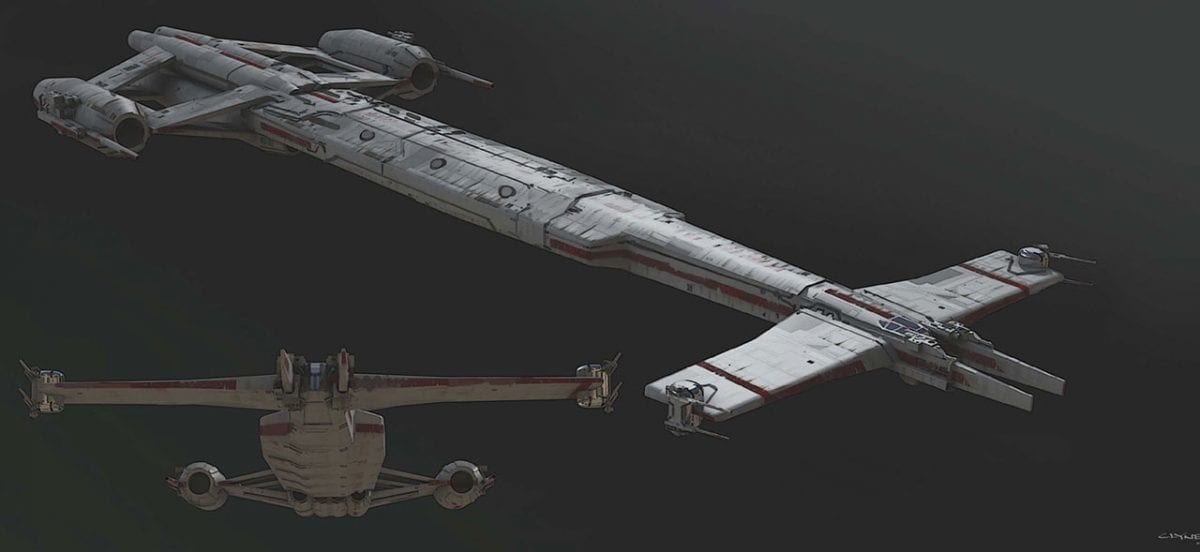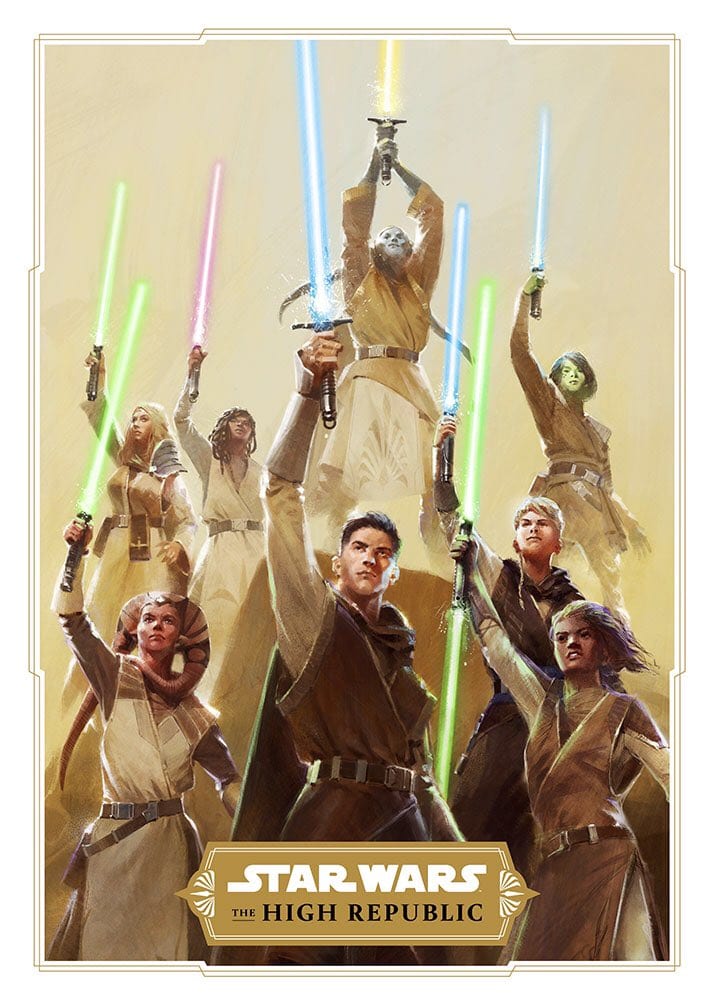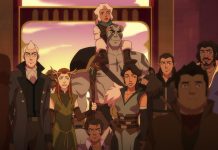We take a (spoiler-free) look at the first phase of books for Star Wars: The High Republic and explain why the stunning new adventures are worth your time.
A new era of Star Wars is nearly upon us with the imminent launch of The High Republic initiative. Though the first set of books won’t arrive until the New Year, I recently had the chance to check out some advanced copies and can now tell you exactly why these are the Star Wars stories we’ve been waiting for.
I won’t be diving into spoilers here (nothing beyond what we’ve seen in previews, etc) because the books don’t launch for a few weeks yet and I wouldn’t want to give all the goods away. Instead, I’ve decided to share some of my general impressions on this first “phase” of The High Republic to help you prepare for all the awesome coming your way next month.
The first books to kick off the new era of storytelling are Charles Soule’s Light of the Jedi (adult novel) and Justina Ireland’s A Test of Courage (junior book). Both of these arrive on January 5th, while Claudia Gray’s Into the Dark launches a few weeks later on February 2nd. At those times, we’ll offer up some deeper (more spoiler filled) dives, but for now, we’ll keep it simple for those avoiding major plot points.
The short answer to whether or not you should pick these books up is: Absolutely. Let me tell you a little bit about why I loved ALL of these books so much.
A Shining Group Effort
Each of the novels are able to stand up on their own merits, delivering thrilling stories you can enjoy without anything else. That said, one of the things that impressed me most is how wonderfully these stories work together.
While some may decry the idea of a “story by committee” the approach really seems to work here. Not only do the stories work independently but also serve to paint a cohesive picture of the galaxy at large and the various things going on at this point in time. You can feel the care and attention that was put into the world building and the shared resources of multiple authors working in tandem.
While you could read any book first, Light of The Jedi helps set the stage for the whole initiative. It’s here that readers are treated to the major cataclysmic event that is referenced throughout all the stories and ultimately brings the new villainous threat into focus. Without getting into spoilers at this time, I have to say that this novel whips an INSANE amount of ass.
It manages to introduce a large cast of characters (many of whom you’ll see in the other books and comics) in a really short period of time, all while making them feel fleshed out and keeping the action going at a blistering pace. Seriously, reading through Light of the Jedi felt like watching a blockbuster film, leaving my breathless and reeling from emotional moments.
The books manage to feel distinctive; capturing the voices of the individual authors. Soule’s Light of the Jedi is a grandiose blockbuster with action and heart. Claudia Gray’s Into the Dark brings deep character focus along with intriguing lore, while Justina Ireland’s A Test of Courage is an adventure wrapped up in strong thematic elements.
Even so, the group effort that ties them together can be felt in the pacing and how they incorporate elements (story, characters, etc) into one another. For Light of the Jedi (it was definitely my favorite and why I keep using it as an example) it felt like the prose and story was distilled to its finest point. No word felt wasted, and even with plot lines that are clearly meant to be picked up elsewhere, the overall story was laser-focused. Nothing was superfluous, with prose that managed to paint vivid pictures in my mind without feeling overly wordy.
A Test of Courage and Into the Dark take those elements and tell different stories. Not only do they give us a deeper look at some of the side characters from LOTJ, they expand on some important ideas introduced in a significant way. Courage really puts the spotlight on the overall ideology of the Jedi of this time period by putting readers in the shoes of a very young, but recently elevated, Jedi Knight. Dark dives deeper into the lore aspect and overall history, expanding readers’ viewpoint of the galaxy in general.
Each book delivers another aspect of the setting, heroes, and villains which flesh these ideas out and makes it feel like a living and breathing experience. While all of the Star Wars books essentially share the same space, The High Republic feels like it takes that idea to an all new level of integration. One that could only come from how closely they’ve worked and plotted together.
Hell, I haven’t picked up a regular comic series in almost a decade (I normally wait for the trade collection) but I’ve got both High Republic comics pre-ordered and on a pull list. That’s how enraptured I’ve become by the world they’ve developed.
A Time Period Worth Exploring
To be honest, I wasn’t entirely thrilled about the time setting when they first announced The High Republic. Being set 200 years before the events of The Phantom Menace just didn’t seem quite long enough. Not enough of a separation from the events to feel like things were drastically different or worth exploring.
I’ve never been so happy to be wrong. The High Republic is a vastly different setting and even references the further distant history that led to them being where they are now. There are hints that something happened, during the time of the Old Republic that essentially set the galaxy back a few notches…Probably something to do with the Sith War that gets a mention.
The High Republic is essentially a renaissance period for the galaxy. Now that people have recovered the Republic is ready to expand its borders, moving out from the core and integrating more cultures and people in the galaxy. The unprecedented period of peace has allowed new innovations and given the Chancellor the opportunity to introduce a number of “Great Works” to improve life for those in the Republic.
The Starlight Beacon is among these Great Works. The space station will serve as a hub for the Republic in the Outer Rim, offering better communication relays, an updated medical facility, and even a Jedi Temple. While it gets a few big mentions in the books, it’s clear the Beacon is set to become a focal point further down in the series.
Not everyone is thrilled with the Republic’s expansion, however, and this brings a new threat into the forefront. Even though there’s no war on-going and the galaxy is, generally, at peace that doesn’t mean there aren’t threats to face. Among them are the Nihil, who are known around that part of the galaxy as marauders.
Seen only as pirates and brigands the true strength of the Nihil is currently unknown, but they bring strange technology that makes them one of the biggest threats the Republic will have to face. That begins to come into focus in these novels and tease something even more sinister that I suspect will play a larger role in the next phase.
Regardless, the time period they’ve chosen manages to feel fresh, even if it’s not as far back as I initially was hoping to see. I love getting to see Jedi as they SHOULD be, though you can start to see some of the elements that will ultimately lead to their downfall and the rise of the Empire. When you think about it, the entirety of the Star Wars Saga, from The Phantom Menace to Rise of Skywalker, only covers 60ish years. With that in mind and the various hints of what’s to come, it’s easy to see how things could have changed so drastically in 200 years, while still feeling connected.
There feels like endless story possibilities to explore, and the mentions of events even further back fills in some gaps while teasing bigger stories to be told. Hell, in Into the Dark we get to explore some ancient artifacts and learn about other events, while still exploring this specific period of time.
Engaging Characters
So much of Star Wars, in general, feels wrapped up in the drama of the characters in it. Diving into an all new era (with only a few characters old enough to still be around) it seems more important than ever to give audiences new heroes (and villains) they want to follow.
You don’t have anything to worry about here. There’s a lot to love about The High Republic, but beyond the setting and action, they’ve managed to deliver a cast of new characters that are almost instantly engaging.
The main Jedi characters in each story bring their own perspective on the Order and Force that make them fun to read about in different ways. Avar Kriss (LOTJ) feels like the idyllic Jedi you think of from legends/history. She manages to encompass the “superhero” idea of Jedi while being grounded and personable. Vernestra Rwoh (Courage) is the youngest to attain Knighthood, but manages a level of confidence and trust in the Force. Padawan Reath Silas (Dark) is still learning. With a weaker connection to the Force than most, he pushes himself in other ways to make up for it. His determination, and discontent at some things is a perfectly relatable viewpoint for readers.
There are so many other Jedi sprinkled throughout the books, some that I hope end up getting their own stories down the road, but these definitely stood out and drove their individual stories forward. While we’ve seen many of them thanks to character and art reveals, there are still a few newcomers along the way. What impressed me most is how quickly Light of the Jedi introduced them.
Seriously, I think just about every major character in the novel (and most of those in the other books/comics) appear in the first few chapters. Even though they come at you in a rapid-fire way, each of them feel distinct and give you a sense of their personalities (partly because they are a very diverse cast of characters). Even though there’s a BUNCH of them name-dropped, you never feel lost as chapters swap between them.
So much information is conveyed without heavy exposition dumps, and works to “show” readers the differences between all these characters rather than simply talk about them. Part of it helps that they’ve released those early images so you’re able to form a picture in your mind of these characters ahead of time, but it’s really a credit to the writing/world-building.
As the stories go on, we learn even more about these characters beyond their heroics. We get to learn about their quirks and past history even as events continue to propel forward. I was surprised at how quickly I became enamored with so many of these characters and the depth of emotion I felt when some of them get hurt (or worse). Even though I’ve only read the first three books that are part of this initiative, they already feel like characters who’ve been around for a long time.
I’m trying not to sound too much like I’m gushing here, but there are already a couple characters I enjoy more than certain ones from the films/shows. Despite setting up big events and bringing plenty of action, the stories keep the characters at the forefront. Even with galactic spanning events going on, they still feel like character-driven stories that kept me invested in the action on a deeper level.
There’s so many more things I want to say. From a plethora of Easter eggs for fans (both canon and older EU stories), and story tidbits that tease bigger things, there’s so much to discuss and break down. Steve and I will be diving into more of this, and talking about the books individually when launch comes around.
For now, I’ll say that The High Republic is everything I’ve been wanting out of Star Wars storytelling for a while. If you’re wondering about whether or not you should pick them up next month, don’t hesitate. In fact, go ahead and pre-order them now. I’m already itching for the next phase of novels and that newly announced Acolyte series. There’s SO MUCH potential in this era and these first set of books showcase that in grand style.
[Note: We’ve included some affiliate links within the article.]

